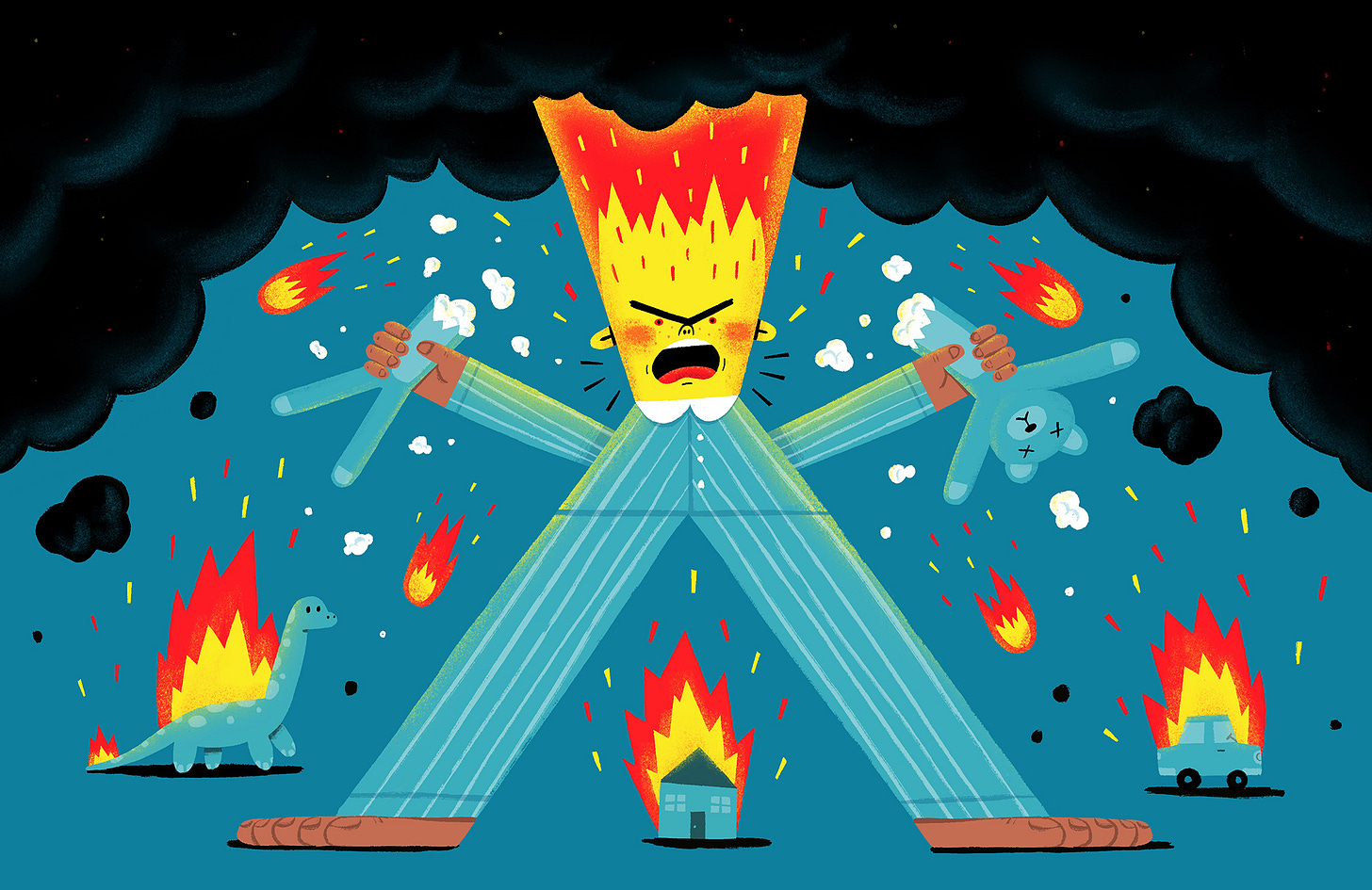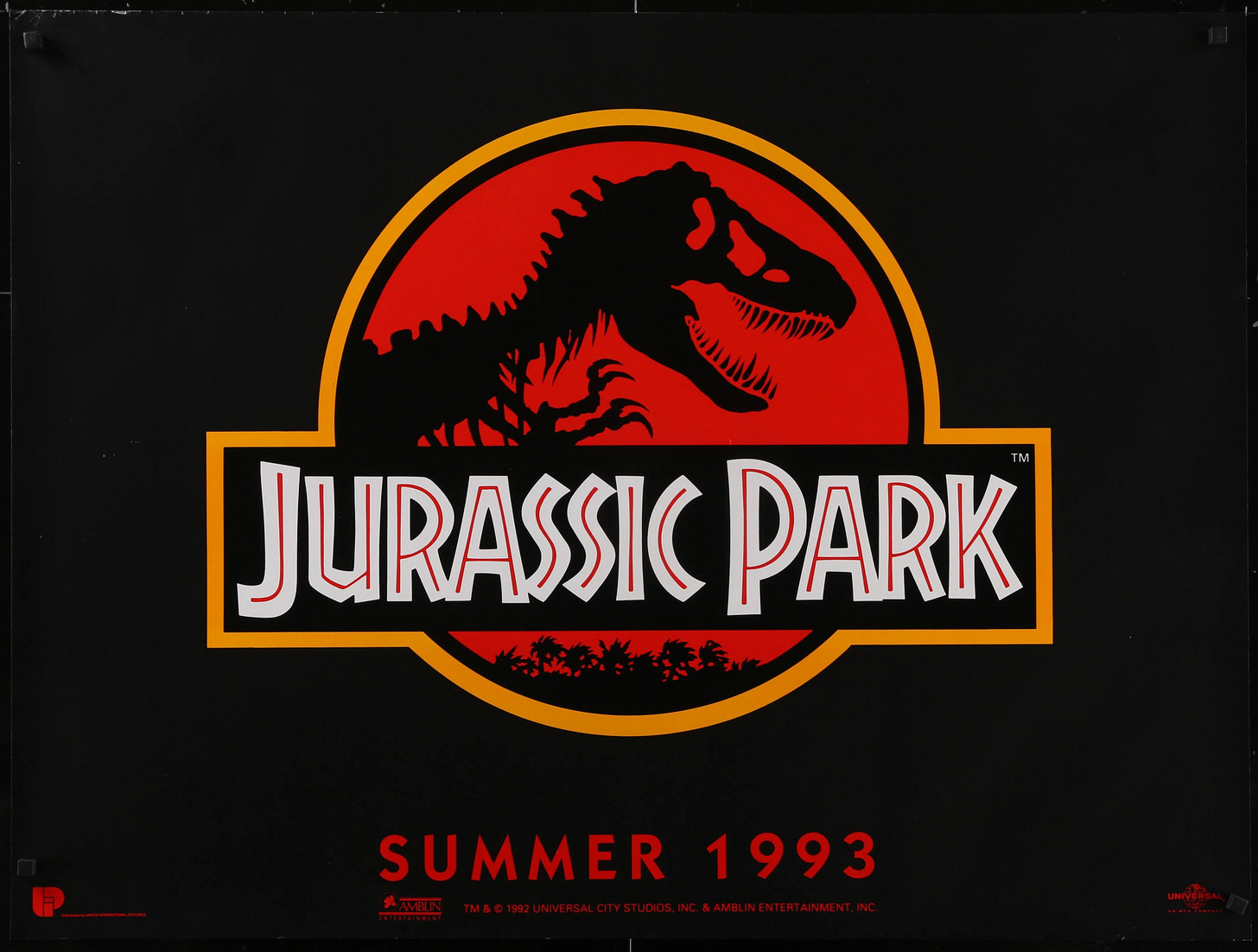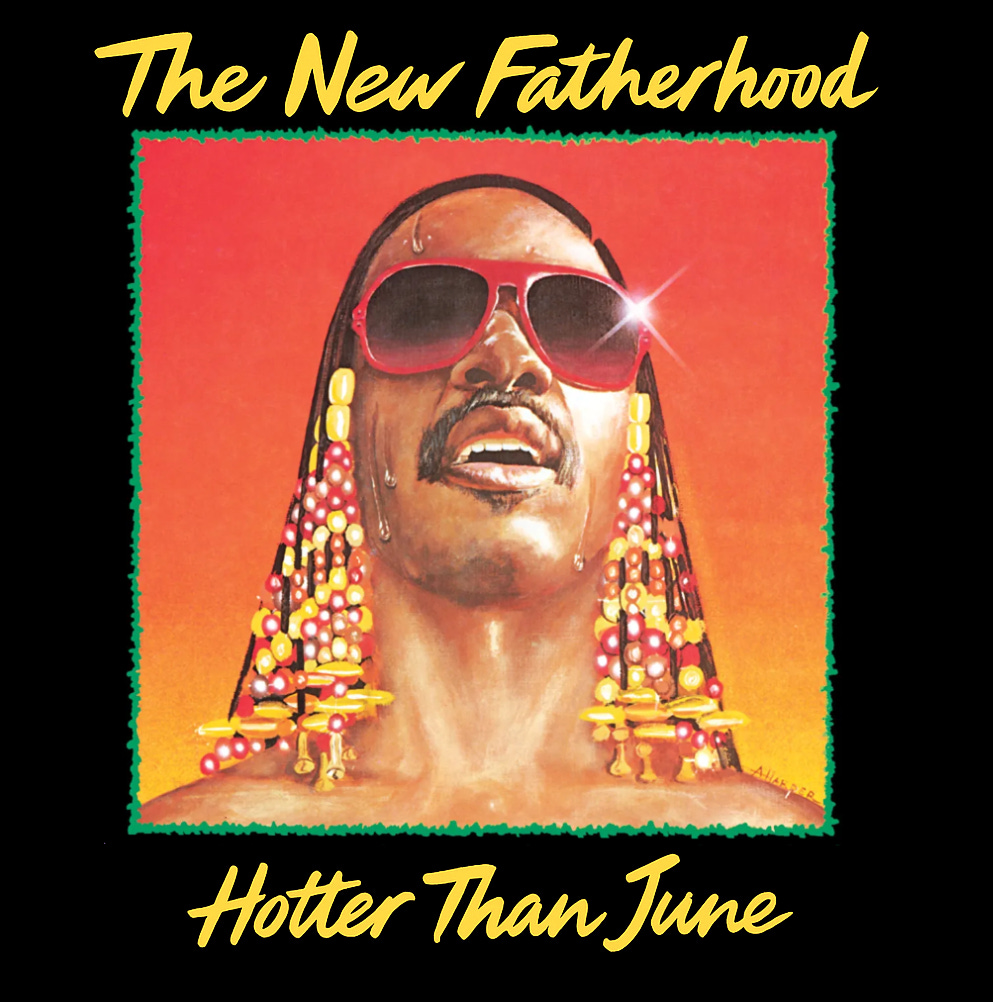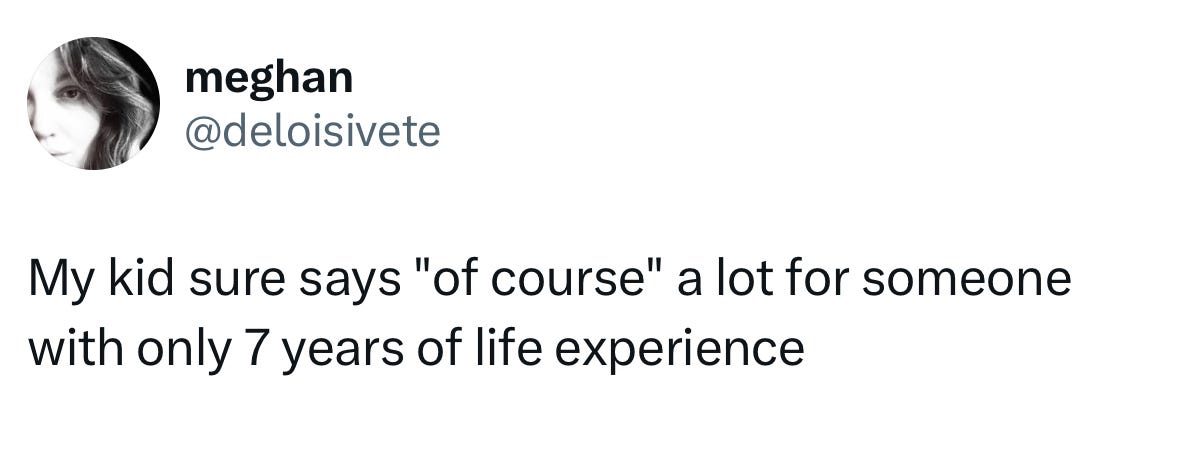Yesterday marked 32 years since Jurassic Park was released in cinemas across the US. It arrived on British shores a month later—that was how movies rolled out back then, promotion cycles timed around the availability of talent who couldn’t be in more than one place at a time, in the days before social media meant instant access to everyone, everywhere, all of the time. By phasing release dates, they’d also save money on the number of physical film reels they’d need. A tentpole movie would launch in a predictable fashion across English-speaking regions: first opening in the US, before making its way to the UK, Australia, New Zealand and beyond. The dubbed versions for non-English markets would come later, stars turning up to lend their faces—but very rarely their voices—to proceedings.
So, it would have been July 1993 when my mum took me to the cinema to experience Isla Nublar in all its splendour. I was ten years old. We’d both read the book and were beyond excited to see it on the big screen. When I was a kid, it was always dinosaurs and astronauts. The Egyptians, The Greeks, and The Ghostbusters came close, but the idea of watching Industrial Light and Magic turn their expertise from X-Wings to a T-Rex meant I was sold before the curtain rolled back an inch.
We went on the opening weekend. My sisters came with us, they’d have just turned 8. My mum sat on one end of four seats. I sat on the opposite side. As the movie started, we looked over my sisters and smiled at each other, both tense with anticipation. The film remains as mind-blowing today as it did all those years ago—that opening scene, the transportation of a Velociraptor gone wrong, the scream of “SHOOT HER!” echoing through the theatre. Was I too young? Probably. Were my sisters? Almost certainly. Common Sense Media recommends kids wait until they’re 12+ before watching it. But that site always leans conservative. (My general rule is minus two years from their recommendation for most films, and maybe even up to four if you really want to watch it.)
In December 2021, my daughter and I were quarantined away from the rest of the family for what will always be remembered as the toughest Christmas on record. We got a positive diagnosis a few days before Santa was due to arrive, so we booked an Airbnb around the corner from the rest of my family (my in-laws were shielding at the time due to their age). We stopped by a Tesco, masked up, and grabbed some supplies. We bought a different packet of Haribo for each day we’d be under house arrest: ten in total. And we sat in, watched movies, and ate sweets. We watched Jurassic Park together—she’d have roughly been the same age as my sisters were, all those years before. Maybe she shouldn’t have watched it. Maybe my mum shouldn’t have taken us. But without that moment, I wouldn’t have this one, these memories, more than three decades later; the four people in those seats now three. I remember three things from that afternoon. It was the first time I watched a movie and thought how strange it was that these characters were different from the ones I saw in my head. That both my sisters fell asleep during the scene where the T-Rex breaks through the fence. And how happy I was to be able to talk about this moment with Mum.
When I click Publish, this newsletter will land in the inbox of almost 20,000 of you. Last year, I decided to push back against the trend of newsletters placing their best content behind paywalls to maximise paid subscribers, and instead decided to experiment with Tim Carmody’s idea of unlocking the commons:
“The most powerful and interesting media model will remain raising money from members who don’t just permit but insist that the product be given away for free. The value comes not just what they’re buying, but who they’re buying it from and who gets to enjoy it.”
Writing every week about helping dads be the best dad they can be, and then paywalling premium content only for those would could afford it, gave me the ick. The experiment proved I wasn’t alone in that feeling, and now 325 dads (and a small fraction of “curious moms”) pay for this newsletter so it can remain free for everyone else. I’ve stuck with this model, even as my Substack dashboard regularly reminds me that publications posting a paywalled essay every week are making more money than I am, or nagging me that my paid subscriber count could be a lot higher if only I funnelled more users into their app (fool me once, etc). But these 325—only handful more than the Spartan dads that battled the Persian king Xerxes, bringing a similar level of intensity but much poorer muscle definition—decided, for one reason or another, to put their hand in their pocket (or briefly stare into their phone to active Apple Pay’s FaceID verification) and support The New Fatherhood. Maybe they believed in keeping it free for everyone. Maybe they were curious to check out The Dadscord and got hooked on having an always-on community of awesome dads in their pocket, never more than a short message blast away. Maybe they just thought “Fuck it, I’ve spent $6 a month on more stupid shit than this, so why not.” Whatever the reason, I thank you—that is money in the bank, and a solid contribution to my family’s cost of living, which I would be without if not for this newsletter.
At the time of writing, this newsletter generates $20,422 a year. Once Substack takes their 10%, Stripe takes their 3%, and I squirrel away 10% for the therapy fund, I’m left with roughly $1,200 for the 50 hours of work that go into writing this newsletter each month. That’s $24 an hour, well below the living wage for a father with two kids in every single US state. And that’s before I pay for guest posts, illustrators, design work, and podcast edits. What I’m left with is not nothing. But it’s not enough, as a friend once memorably quipped, “to keep putting baked beans on my kid’s toast.” Since leaving Google, I’ve had to find other ways to do that. For the last few years, I’ve coached people through the biggest shifts in their lives and careers: taking the leap from salaried employees to creative independenta; working to weaken bonds between work and identity that have been seared into their sense of self; getting folks ready to step into a new role, another child, or a new life in another country. Some arrive with a sense of what might be next. Others have no idea but know something needs to change. Over the last few years, I’ve coached around twenty-five of you, dads who reached out after reading the newsletter, later going on to tell me, as Evan did over email last month, of the positive outcomes after spending time working together:
“A year out, I am still benefiting from the meaningful thinking you encouraged me to do as part of the process. I am able to connect what I’m doing to a sense of purpose and my core values. I’m also finding that by following the values we defined, I’m connecting with people who are interesting, and some of those are becoming collaborators and even friends. It’s cool to look back and see how intentional all of this has been, and how close it aligned to the long-term goals I set for myself. And most importantly, my work situation is allowing me to be fully active as a parent and husband. It’s all still very much in flux, but a big thing I’ve learned is that the act of trying to create a meaningful life means nothing is ever solved; however, I am enjoying that process a great deal now. Taking action, reflecting, refining. I look back on our work together as one of the most important and impactful things I’ve done, a refreshing experience that I feel every day. Thank you so much.”
This week also marked the halfway point for REBOOT, our six-month group coaching program with dads who are regular readers of the newsletter. It’s been a powerful experience to bring a group of like-minded dads together every week, as we discuss fundamental shifts in fatherhood, in our relationships with work, family, and ourselves, and how we’re navigating and defining new models of living with and raising kids. I feel like I’ve learned as much from them as I hoped they’ve learned from each other. Applications are now open for the second cohort, which will kick off in January 2026.
Even two days in, June had already been a lot. The month started in Manchester, where I was marking the first anniversary of Mum’s death. I sense this month will always be tough, as long as I remain on the right side of the grass. But getting to the end of Year One was especially so, scars still fresh. The kids are finishing their school year in a matter of days, which means the commencement of eleven weeks of summer holidays, a new set of logistics and timings, and a shitload of end-of-year drum recitals, dance performances, and teacher gifting ceremonies.
Amidst all of this, I’ve picked up two work projects that require international travel. The timing isn’t ideal, but one thing about independent life is that you have to grab opportunities when they arise. Alongside writing and coaching, I’ve continued to build out the skills and relationships developed over twenty years in advertising. Since I went out on my own, I’ve been fortunate to land a few great branding and strategy projects for startups and creative upstarts every year. Over the last half a dozen projects, they’ve begun to coalesce into that career holy grail: something I enjoy, something businesses need, and something that I can do very well. Last year, I worked with a SaaS AI startup to develop a new strategy and positioning that led to a $2m seed round. I also partnered with a biotech startup to tell the story of teaching LLMs to speak fluently in the language of DNA, power bold breakthroughs in drug research, and sell the company narrative to the group of investors who joined the $60 million Series B funding round. Almost all of my work comes through word of mouth: founders delighted with how the project went, leading to more work in their network. Two of these projects will kick off this summer. The first is with an electric vehicle company on this side of the world, the second with a venture capital fund focused on climate change innovation in California. I never would have predicted that writing a few thousand words a week about my own life would hone a tool that I could wield for others, but have lately realised that a story is a story—whether it’s about the life and trials of one person, or the life-changing work of dozens of others.
If this essay feels disjointed, jumbled up, spinning like so many metaphorical plates, then welcome to my current state of mind. Could an AI write something both this scatterbrained and (hopefully) coherent? Good luck trying. This newsletter fits into the gaps of the life I’ve intentionally crafted, growing like urban greenery in the cracks of the pavement, a conscious space of my own making, and something I’ve helped others create for themselves. These things piled onto my many plates are not unpleasant—last weekend I saw LCD Soundsystem in a field and cried straight through “Someone Great” thinking about my mum. But in all of our lives, there will be times when we’re placed under intense pressure, and subject to a level of strain where something’s gotta give. As the Dadscord dads will know, this year I’ve spent a lot of time solo parenting so my wife can pursue the next step in her career. And this month is a perfect storm—everything is coming to a head, and we’re all feeling it. Yesterday I screamed at my daughter in the car park—in my defence, she screamed first, and it was an appropriate response. But it wasn’t my finest moment. We both apologised to each other, after a very tense and deathly silent school run. But it was indicative of a level of stress that we’re all feeling.
The perfect storm in your twenties can feel as if the waves are crashing onto the hull of your ship as you boldly grab hold of the wheel and attempt to steer into them. But experiencing these moments as a parent means not just battening down your own hatches, but doing it for everyone, while your kids are screaming at you, knowing if your attention wavers, even just for a moment, they could fall overboard. Right now, life is a lot, and I’m at my limit. As ever, I’ve taken 2,000 words when just a few would have sufficed: you might not see me in your inbox on a weekly basis for a while.
But normal cadence will resume after regular Mediterranean summer programming.
Good Dadvice
Say Hello
How did you like this week’s issue? Your feedback helps me make this great.
Loved | Great | OK | Meh | Bad
Branding by Selman Design. Illustration by Tony Johnson. This newsletter is brought to you by the number 3, the letter E, and the 325 generous, wonderful, beautiful human beings who once smashed that Upgrade to Paid button. Join their ranks today and help push the TNF rate as far as Mississippi, the lowest in the US, with a living wage of $36.12 per hour.
You can also help put baked beans on my kid’s toast by hiring me as a coach, or if you’re a founder and need help communicating your company story to investors, customers, and potential new employees, then we should talk—maybe even in person, in the Bay Area, first week of July?









